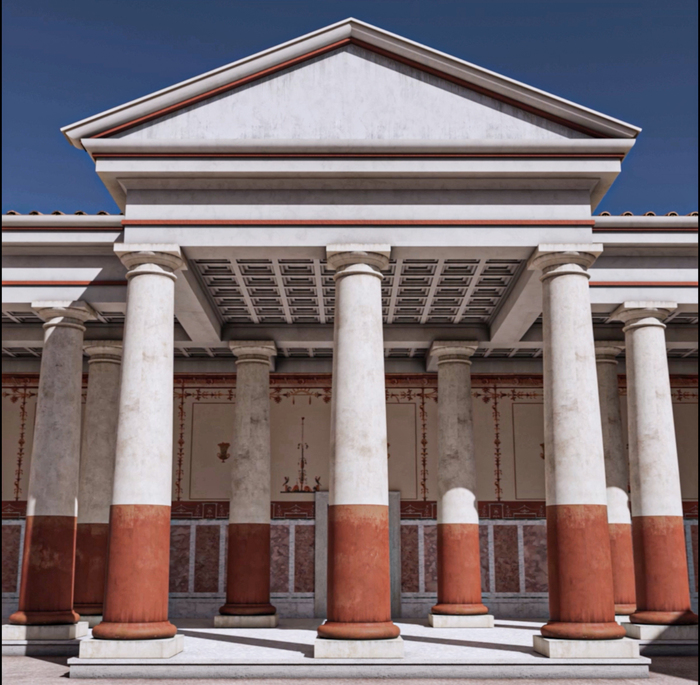Enlarge image
Mosaic find in the central English county of Rutland
Photo: Ulas / dpa
Most of them do not necessarily locate remnants of Roman culture in Great Britain, but rather further south.
But once the long arm of the Roman Empire reached as far as the island - well into the 4th century AD.
In London's underground, called Londinium in Roman times, traces of the former occupiers can still be found today.
A British farmer made a special find during the corona lockdown last year.
In his field he discovered a Roman mosaic and the remains of a villa.
He then notified scientists who systematically excavated and documented the find.
During the excavations in the central English county of Rutland, human bones were also found.
It is the most exciting discovery of a Roman mosaic in Great Britain in 100 years, said John Thomas of Leicester University and the first of its kind. The ruins are also an excellently preserved example of a villa.
The eleven by seven meter mosaic was thought to have served as the floor of a dining room, said the historic England monument conservation authority on Thursday. Mosaics were used in a wide variety of private and public buildings throughout the Roman Empire and often depicted famous figures from history and mythology. However, the Rutland mosaic is unique in Britain as it depicts Achilles and his battle with Hector at the end of the mythical battle for Troy. It comes from the 3rd or 4th century. Very few mosaics with such scenes have been found in Europe.
The villa is also surrounded by a number of other buildings, as shown by geophysical surveys.
Among them are barns with side aisles, round structures and a possible bathhouse.
It is very likely that a wealthy person lived in the complex.
Fire damage and breaks in the mosaic indicate that the place was later used and repurposed.
The archaeologists also found burials, which were probably only buried there when the villa was no longer inhabited.
This phase has not yet been dated, but it is likely to be from the late Roman or early medieval period.
New excavations should bring further knowledge in the coming year.
“Discoveries like these are very important in piecing together our common history. By protecting this site, we can continue to learn from it, and we look forward to what future excavations will teach us about the people who lived here over 1,500 years ago, "said Duncan Wilson of Historic England.
The find was made by farmer Jim Irvine when he and his family roamed the fields that belong to his father Brian Naylor.
"My interest was piqued when we found unusual pottery under the wheat, so I did some more research," Irvine said.
"Then when I looked at satellite images, I saw a very clear crop mark, as if someone had been drawing on my computer screen with a piece of chalk." Irvine notified the authorities, who in turn hired Leicester University to carry out the excavation.
The mosaic came to light.
joe / dpa






